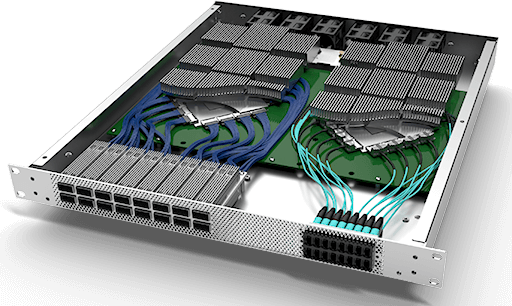
Samtec Signal Integrity R&D Manager Brandon Gore recently presented “IEEE Channel Operating Margin For Channel Analysis” as part of our gEEk® spEEk webinars. gEEk spEEk allows engineers to interact with Samtec’s engineering leaders and SI experts on a variety of selected SI-related topics.
I spoke to Brandon about the presentation and why he selected this topic, why a new channel compliance method was adopted, the fact that it is open-sourced, and its importance and value.
DANNY: Brandon, can you give us a brief overview of this webinar? Why did you select this topic?
BRANDON: There was a paradigm shift in interconnect compliance for network signaling rates that targeted 25 Gbps. This shift happened during the development of a 4-lane 100 Gbps (4 x 25 Gbps) Ethernet PHY in the IEEE 802.3 Working Group P802.3bj, and the compliance metric is called Channel Operating Margin (COM). The metric makes use of an open source, statistical simulation using agreed upon transmitter and receiver minimum capability.
I find this topic important for SI — beyond the obvious needs for Ethernet interconnect design — because this new method allows the engineer to do design work within the context of the transmitter and receiver minimum capability. Mechanical needs and power limits are at odds with what is optimal for signal integrity. Having a metric that guides us to the sufficient SI choice rather than going for the optimal SI choice ultimately saves cost and decreases time to market. I keep hearing that Sales and Marketing likes that sort of thing.
DANNY: Why was this new channel compliance method adopted?
BRANDON: Electrical characteristics of the copper interconnect between the transmitter and receiver, which is often called the channel, are measured with a network analyzer to yield scattering parameters in the frequency domain. Traditionally, the analysis of these measurements (or models) were made against masks applied across the frequency dependent responses to constrain various channel impairments.
Inevitably and as seen in the graphic below, one mask would have a small excursion over a few frequency points. Does this mean my channel design will not operate? What if a particular metric was well within the mask limits, is there a trade-off allowed? Trying to balance all of these situations can lead to overly constrained masks.
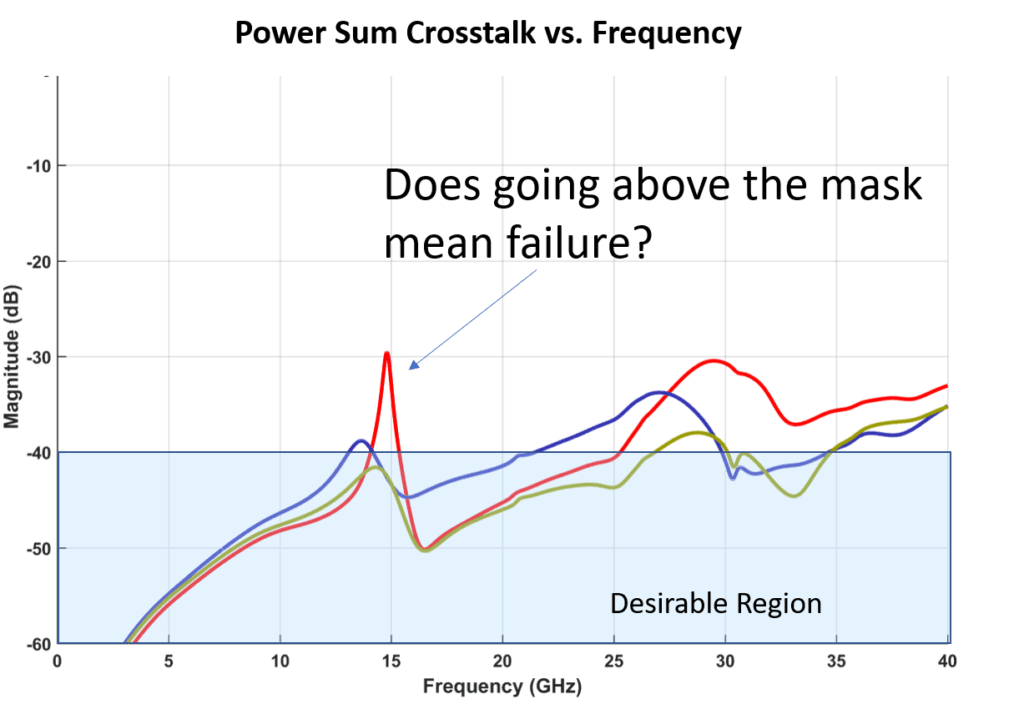
An advantage of a single channel compliance metric, like COM, is that all the dozens of variables in interconnect design can be considered and datamined for insights. This is very difficult to do with various frequency dependent masks. For example, the chart below shows a comparison of connector performance against COM while considering many system parameters. A common success threshold for COM is 3.0 dB.
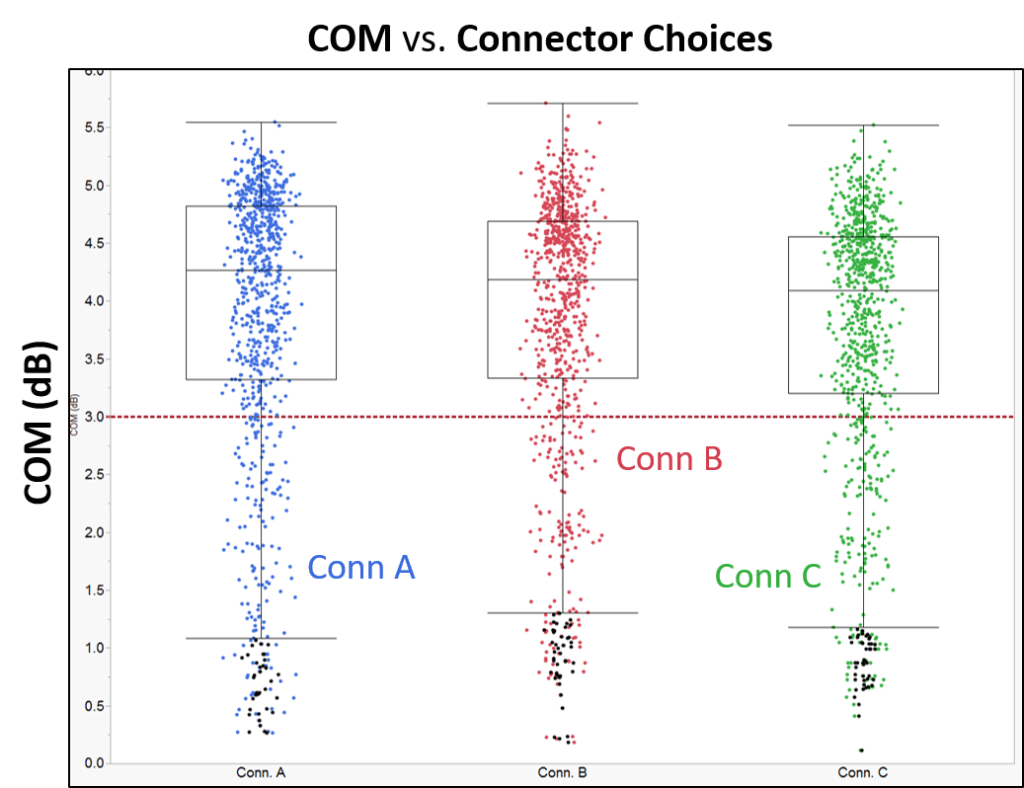
Not only are the above inconveniences addressed, but more importantly, there is now a conversation to be had during the Standard development that ties transmitter and receiver capability to the channel expectations.
DANNY: You mentioned that this simulation method was open source. Can you download it?
BRANDON: If you are designing Ethernet channels, the IEEE 802.3 Standard Annex 93A describes the equations to be implemented in the coding language of choice, and the various MDI specific clauses provided the configuration inputs. IEEE also makes available an example implementation done in Matlab®. The current version is 2.93a and can be found here under the Tools section.
Of course, PCI-SIG has a similar methodology using the simulator Seasim for PCIE channel compliance. And, if the silicon devices that you are working with do not have a configuration for either of these methods, there is often a IBIS-AMI simulation that can be acquired to give device specific performance in terms of eye height.
DANNY: How would you summarize the importance of a metric like Channel Operating Margin?
BRANDON: There are a few examples of selecting interconnect components that I used during the webinar to illustrate the usefulness of COM. I would encourage readers to check those out. But, in general, although frequency domain metrics are useful to SI engineers, they should be used with caution. These, often just recommended guidelines, can potentially lead to unnecessary system cost, or maybe worse, a false sense of system performance. At the end of the day, signals operate in the time domain and pursuing design in the context transmitter and receiver capability is needed for higher data rates.
Here’s a link to Brandon’s webinar – IEEE Channel Operating Margin (COM) For Channel Analysis.
YOU MAY ALSO BE INTERESTED IN THIS gEEk spEEK OVERVIEW: PCI Express: Is 85 Ohms Really Needed?
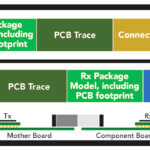
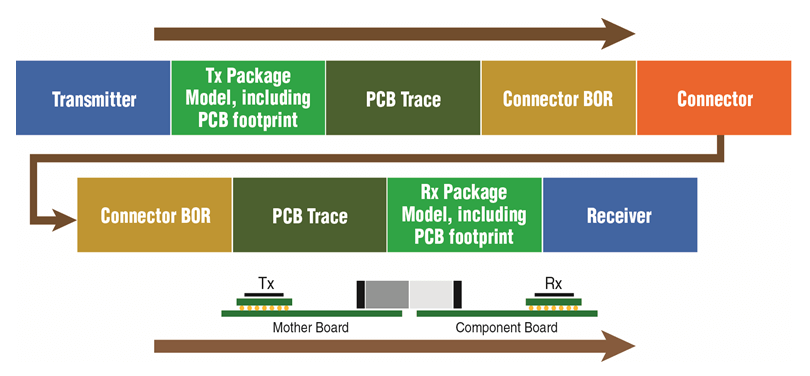

Leave a Reply